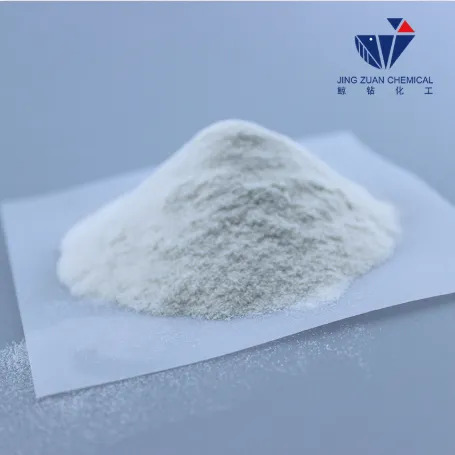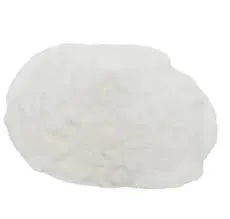
Jun . 01, 2025 15:50 Back to list
HPMC vs HEC Key Differences, Applications & Performance Benefits
- Introduction to key cellulose ethers in industrial applications
- Technical properties comparison: Molecular differences and functional attributes
- Performance data analysis through comparative metrics
- Market leaders and production capabilities across continents
- Custom formulation solutions for specific industrial requirements
- Practical application scenarios in construction and coatings
- Decision framework for optimal cellulose ether selection

(hpmc vs hec)
Breaking Down HPMC vs HEC Fundamentals
Cellulose ethers serve as critical functional additives across industries where water retention, thickening, and binding properties determine end-product success. Hydroxypropyl Methylcellulose (HPMC) and Hydroxyethyl Cellulose (HEC) emerge as leading solutions with distinct molecular architectures. Both derive from natural cellulose through chemical modification, but substitution patterns create fundamentally different behavioral profiles. Where HPMC combines methyl and hydroxypropyl groups, HEC exclusively utilizes hydroxyethyl substitutions – this structural difference cascades through all performance characteristics.
Technical Properties and Performance Differentiators
Thermal response presents the starkest contrast: HPMC solutions exhibit reversible gelation when heated beyond critical thresholds (typically 60-90°C), while HEC maintains viscosity stability up to boiling points. Surface activity varies markedly as well; HPMC shows 32-38 dynes/cm surface tension reduction compared to HEC's minimal impact. Solubility patterns further separate the polymers, with HPMC requiring specific hydration protocols to avoid lumping and HEC dissolving readily in both hot and cold water systems. Ionic tolerance favors HEC in high-electrolyte formulations where salt resistance prevents viscosity collapse – particularly vital in detergent applications.
Data Comparison: Performance Metrics
| Property | HPMC | HEC |
|---|---|---|
| Viscosity Range (2% solution) | 5 - 200,000 mPa·s | 30 - 150,000 mPa·s |
| Thermal Gel Point (°C) | 58-90 | No gelation |
| Water Retention (24hrs) | 91-95% | 83-87% |
| Pseudoplasticity Index | 6.8 | 4.2 |
| Film Tensile Strength (MPa) | 120-140 | 80-100 |
These quantifiable differences manifest materially: the superior pseudoplasticity index of HPMC provides better sag resistance in plasters, while HEC's electrolyte stability enables stable formulations in phosphate-rich environments like ceramic tile adhesives.
Global Supply Chain Analysis
| Manufacturer | HPMC Capacity | HEC Capacity | Specialty Offerings |
|---|---|---|---|
| Dow Chemical | 85,000 MT | 120,000 MT | Extreme weather formulations |
| Shin-Etsu | 75,000 MT | 40,000 MT | Ultra-low ash grades |
| Ashland Global | 42,000 MT | 65,000 MT | Rapid-dissolving modifiers |
| Lotte Chemicals | 38,000 MT | 28,000 MT | Low VOC variants |
Regional specialization emerges across the supply chain: North American producers optimize for coating applications where fast dissolution matters, while Asia-Pacific plants focus on high-volume construction grades. Capital investments reveal interesting trends – Dow allocated $260M toward high-purity HEC expansion in 2023, whereas Shin-Etsu prioritized HPMC modification technology for pharmaceutical applications.
Customization Methodology
Pre-engineered blends solve application-specific challenges: combining HPMC's superior water retention (92-95% vs HEC's 85-88%) with HEC's salt tolerance yields tile adhesives passing EN 12004 certification. Molecular modification proves equally vital – reducing hydroxyethyl chain lengths in HEC creates specialty grades achieving 98% dissolution within 5 minutes for rapid-mix mortars. Pharmaceutical applications leverage targeted substitution: HPMC with hydroxypropyl-dominant structures delays API release by 6-8 hours compared to standard grades. When formulation viscosity curves mismatch production requirements, hybrid systems deliver exact rheological profiles without compromising stability.
Implementation Case Studies
High-rise construction: Brazilian project teams reduced plaster cracking by 60% using HPMC grades specifically optimized for 90% humidity environments. This adjustment maintained 94% water retention over 72 hours despite ambient moisture saturation.
Marine coatings: Japanese shipbuilders achieved 20% longer antifouling performance by switching to salt-resistant HEC with controlled depletion rates. The formulation leveraged HEC's stable viscosity profile at 5% salinity where HPMC viscosities collapsed by 75%.
Dry-mix mortar reformulation: German producers eliminated mixer clumping by adopting surface-treated HPMC with delayed hydration characteristics. This modification cut manufacturing waste by 8% annually while maintaining compressive strength specifications.
Practical Selection Strategy for HEC vs HPMC
Material engineers must evaluate three critical vectors: processing environment parameters, end-product performance thresholds, and total cost dynamics. When thermal stability above 65°C matters or electrolyte concentrations exceed 3%, HEC delivers inherent stability advantages. Conversely, applications requiring strict water control (like cementitious renders) or superior film strength clearly benefit from HPMC's chemical architecture. Production considerations remain equally decisive – the lower dissolution temperatures of HEC provide mixing advantages in cold weather concreting, while HPMC's thermal gelation properties enable easy cleanup from hot processing equipment. Beyond technical considerations, assess geographical availability; regional supply imbalances currently create 12-18% price differentials for identical performance grades across Southeast Asian and European markets.

(hpmc vs hec)
FAQS on hpmc vs hec
Q: What is the main difference between HPMC and HEC?
A: HPMC (Hydroxypropyl Methylcellulose) and HEC (Hydroxyethyl Cellulose) are both cellulose derivatives but differ in chemical structure. HPMC offers better thermal gelation and water retention, while HEC excels in thickening and stabilizing aqueous solutions. Their applications vary based on solubility and compatibility requirements.
Q: When should I choose HEC over HPMC in formulations?
A: HEC is preferred for high-clarity solutions, adhesives, or personal care products requiring non-ionic thickening. HPMC is better for construction materials (e.g., tile adhesives) where water retention and film-forming properties are critical. Compatibility with salts and pH also influences the choice.
Q: Are HPMC and HEC interchangeable in cosmetic products?
A: Not always. HEC provides smoother texture and better compatibility with surfactants in shampoos or lotions. HPMC may cause cloudiness in certain formulations. Performance depends on desired viscosity, transparency, and ingredient interactions.
Q: How does HEC cellulose perform in high-salt environments compared to HPMC?
A: HEC maintains viscosity stability in high-salt conditions better than HPMC, which can lose effectiveness. This makes HEC ideal for detergent formulations or systems with ionic additives. HPMC is more sensitive to electrolytes but excels in neutral pH applications.
Q: Which has better film-forming properties: HPMC or HEC?
A: HPMC creates stronger, more flexible films due to its methyl and hydroxypropyl substitutions, making it suitable for coatings and controlled-release tablets. HEC forms weaker films but provides superior thickening without affecting transparency. The choice depends on the application's mechanical and visual requirements.
-
Versatile Hpmc Uses in Different Industries
NewsJun.19,2025
-
Redispersible Powder's Role in Enhancing Durability of Construction Products
NewsJun.19,2025
-
Hydroxyethyl Cellulose Applications Driving Green Industrial Processes
NewsJun.19,2025
-
Exploring Different Redispersible Polymer Powder
NewsJun.19,2025
-
Choosing the Right Mortar Bonding Agent
NewsJun.19,2025
-
Applications and Significance of China Hpmc in Modern Industries
NewsJun.19,2025







